According to the elders, Hoa Loc sand mango has been in the locality since the early 1930s, it was first found in Hoa Loc commune, Giao Duc district, Dinh Tuong province (old).
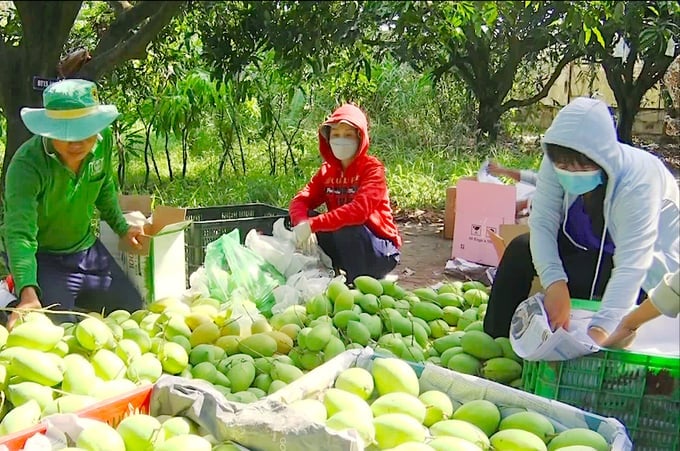
Harvesting Hoa Loc mangoes in Hoa Hung commune, Cai Be district, Tien Giang. Photo: Minh Dam.
A precious mango variety with a history of nearly a hundred years.
When it comes to mangoes, perhaps none are more delicious than Hoa Loc sand mangoes. Ripe fruit has an eye-catching yellow skin, soft, chewy, thick, fibrous, soft flesh, a sweet, refreshing taste, and a characteristic mild aroma. This delicious fruit is loved by gourmets and is often chosen as a gift, or to display on fruit trays during holidays and Tet.
According to records from documents, this mango variety was originally found in Hoa Loc commune, Giao Duc district, Dinh Tuong province (now Hoa Hung commune, Cai Be district, Tien Giang province), so the mango was named Hoa Loc sand mango. After that, people propagated and planted it in many localities. Mangoes are grown a lot in Cai Be (Tien Giang), Cao Lanh (Dong Thap), Chau Thanh (Hau Giang) and Tri Ton, Tinh Bien (An Giang)... In addition, Hoa Loc sand mango is also present in some localities in the Southeast.
However, the quality of the “original” Hoa Loc mangoes from the communes in the specialized growing area of Cai Be district (Tien Giang province) is still highly appreciated by consumers. Over the past decades, despite ups and downs, this fruit is still considered a delicious fruit, a specialty of the Mekong Delta in general and Tien Giang province in particular.
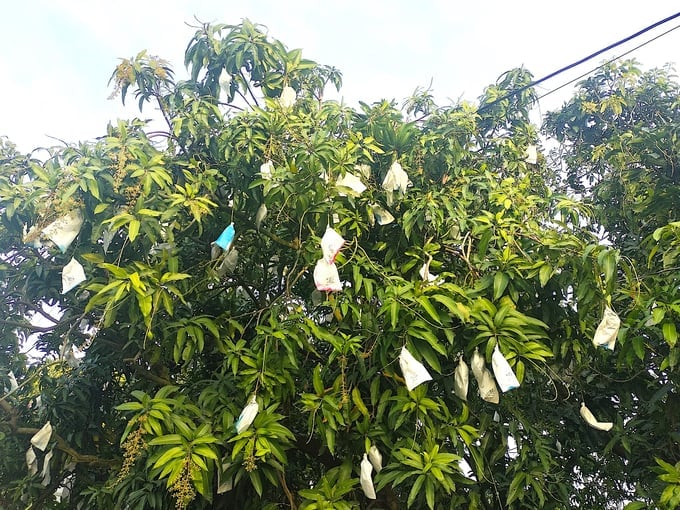
Mangoes are covered to prevent pests and diseases. Photo: Minh Dam.
Mr. Nguyen Van Thuc, Director of Hoa Loc Cat Mango Cooperative (Hoa Hung Commune, Cai Be District, Tien Giang Province) said: "According to the elders, Hoa Loc Cat Mango has been in the locality since the early 1930s. After liberation, mangoes developed more, many fields were converted into gardens to grow Hoa Loc Cat Mangoes, gradually spreading to other localities and developing to this day."
According to the People's Committee of Cai Be district, the mango growing area of this locality is currently over 2,800 hectares, accounting for 71.6% of the total area and the total annual output is over 70,000 tons, accounting for 73.4% of the total mango output of the whole province. In particular, Hoa Loc sand mango is one of the main fruits with competitive advantages of Tien Giang province.
To date, the province has built a specialized cultivation area of over 1,600 hectares, concentrated in communes bordering the Tien River. In 2009, the Intellectual Property Office granted geographical indication protection certificates for Hoa Loc mango products in 13 communes of Cai Be district, including: Hoa Hung, An Huu, An Thai Trung, Tan Hung, Tan Thanh, My Luong, An Thai Dong, My Duc Tay, My Duc Dong, Thien Tri, Hoa Khanh, Hau Thanh and My Loi A.
Hoa Hung commune currently has over 800 hectares of Hoa Loc mango, of which about 348 hectares are bearing fruit, supplying the market with about 5,000 tons per year. According to the solar calendar, each year mango will be harvested twice, the favorable season (from March to May) and the unfavorable season (from October to December) with an average yield of 23 tons/ha.
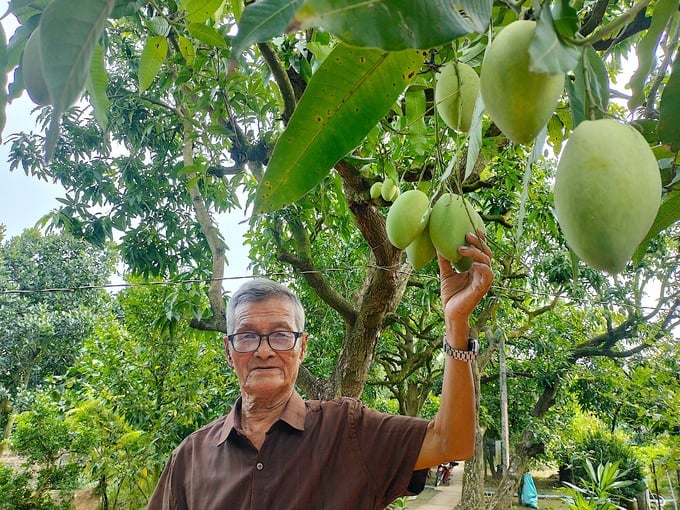
Mr. Nguyen Van Hai is preserving 15 old mango trees (planted since 1982). Photo: Minh Dam.
Mr. Nguyen Van Hai (born in 1935) in Binh Hamlet, Hoa Hung Commune still preserves 15 Hoa Loc mango trees planted since 1982. According to Mr. Hai, Hoa Loc mango is one of the fruit trees that bring high economic efficiency to the locality. People who grow Hoa Loc mango always make a profit because the selling price is quite high, commonly fluctuating from 40,000 - 80,000 VND/kg, the profit is estimated at 50 - 60% of revenue. With 15 old mango trees still preserved, each crop gives Mr. Hai's family over 2 tons of fruit, earning tens of millions of VND.
In the days before Tet, Hoa Loc mangoes are sought after more, so the price is also quite high, making farmers excited. According to Mr. Tran Van Dam, Deputy Director of Hoa Loc Mango Cooperative (Hoa Hung Commune), this year's erratic weather has reduced mango productivity by about 50%. In late December 2023, traders came to the garden to buy and deposit at a price of 150,000 VND/kg for grade 1 mangoes (from 450gr/fruit), and grade 2 (from 400 to under 450gr/fruit) at 80,000 VND/kg. This is a high price compared to other fruit trees and also very high compared to many years ago.
Currently, Cai Be district has established 2 cooperatives: Hoa Loc Cooperative, My Luong Cooperative and 1 cooperative group: Tan Thanh Mango Cooperative with a total area of over 60 hectares. Of which, Hoa Loc Cooperative has a scale of over 100 members, has been granted VietGAP, GlobalGAP certification with an area of over 20 hectares, and has invested in renovating and expanding the area of the product processing and packaging workshop, equipped with some specialized equipment such as fruit washing basins, heat treatment tanks, fruit drying tables, ethylene gas storage, cool storage... Thanks to that, Hoa Loc mangoes are guaranteed in quality, reducing post-harvest losses as well as increasing value and preservation time, while the selling price is stable and 10 to 15% higher than the market price compared to before.
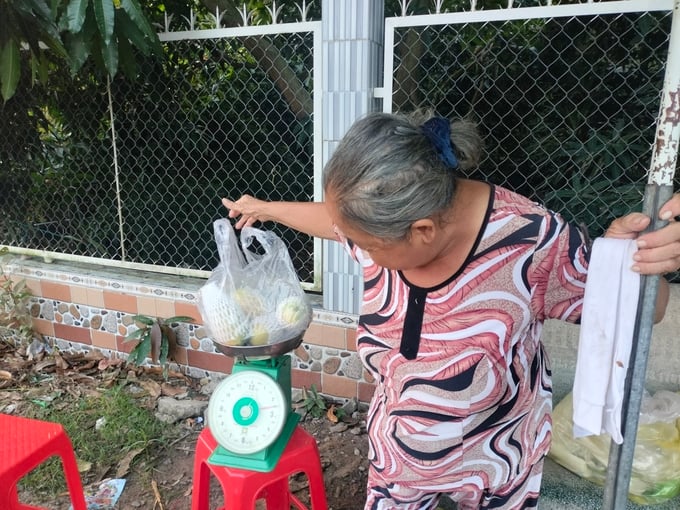
Locals sell Hoa Loc mangoes to tourists. Photo: Minh Dam.
Mr. Nguyen Van Thuc, Director of Hoa Loc Mango Cooperative, said that the maximum exportable output of the cooperative is about 100 tons/year. The average export price of mango is 75,000 VND/kg. Each year, a hectare of mango (1,000m2) after deducting all costs gives a profit of 22 - 25 million VND, accounting for 50% or more of revenue.
“Currently, mango growers focus on safe production, using more biological pesticides and reducing systemic chemical pesticides, and covering fruit to prevent pests,” said Mr. Thuc.
The Hoa Loc mango brand not only dominates the domestic market but also exports strongly to some of the most demanding markets. In particular, this product has been exported to potential markets such as France, the US, Canada, Australia, Japan, Singapore, China and Taiwan... The company has cooperated with Vietnam Airlines to serve Hoa Loc mango on the airline's flights.
Many solutions to preserve and improve quality
Recently, under the pressure of competition in economic value of many other crops, Hoa Loc mango trees are gradually weakening, at risk of decreasing in area due to not fully exploiting their potential and competitive advantages.
Mr. Nguyen Van Hai said that mangoes are effective, but many tall perennial gardens are difficult to cover, spray, and harvest. Moreover, there are not many workers, so many mango gardeners have switched to other types of trees such as plums, jackfruit, etc. Therefore, Mr. Hai suggested a way to keep mango trees from growing too tall, creating a canopy from a young age to make it easier to care for and harvest.
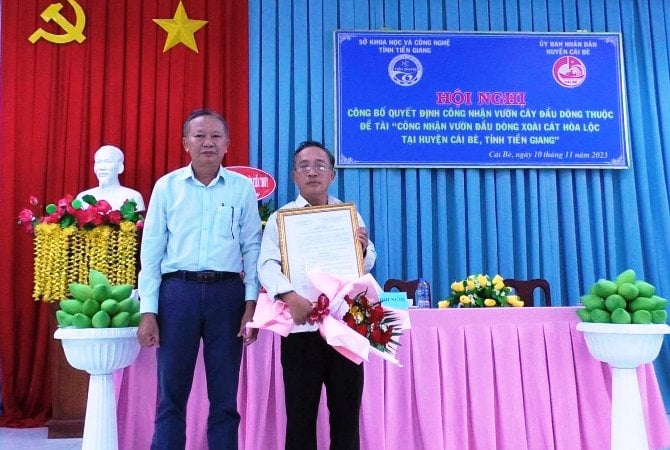
Awarding the decision to recognize the Hoa Loc mango parent garden. Photo: Minh Dam.
Mr. Nguyen Van Thuc said that it is necessary to encourage people to preserve the value of Hoa Loc mango products because this is a specialty that cannot be found anywhere else. In addition, it is necessary to improve the quality of mangoes to preserve them longer, consume them, and export them further.
Recently, the Southern Fruit Institute has bred a thicker-skinned Cat mango variety. The LD12 thick-skinned mango was selected from a cross between the Vandyke and Hoa Loc Cat mango varieties. It has good growth and development ability, and a flowering rate equivalent to the Hoa Loc Cat mango variety. The fruit quality is sweet, with a high Brix level (20.2-23.8%), a flesh ratio of 72-84%, a thick skin (1.6mm, while the Hoa Loc Cat mango variety is only 1.1mm), an average fruit weight of 323-499g, and good fruit quality.
“Our sand mangoes have thin skin, so they are prone to bruises when transported long distances. Therefore, the new mango variety with thick skin will be easier to transport long distances. Currently, some places are experimenting with planting new mango varieties. If they are effective, the cooperative will encourage people to expand and develop them,” said Mr. Nguyen Van Thuc, Director of Hoa Loc Sand Mango Cooperative.
In order to contribute to affirming the brand and opening up new prospects for Hoa Loc sand mango products, in 2021, the Department of Science and Technology of Tien Giang province approved the decision to implement the grassroots project "Recognition of Hoa Loc sand mango parent gardens" chaired by the Agricultural Service Center of Cai Be district.
The Hoa Loc mango orchard is planted on an area of 0.9 ha in Binh hamlet, Hoa Hung commune with 200 trees aged 8-10 years. The project selected 50 trees with uniformity, the same age, eligible for monitoring, collecting indicators to register for certification of the orchard, code the trees and diagram the orchard system to facilitate monitoring and management.
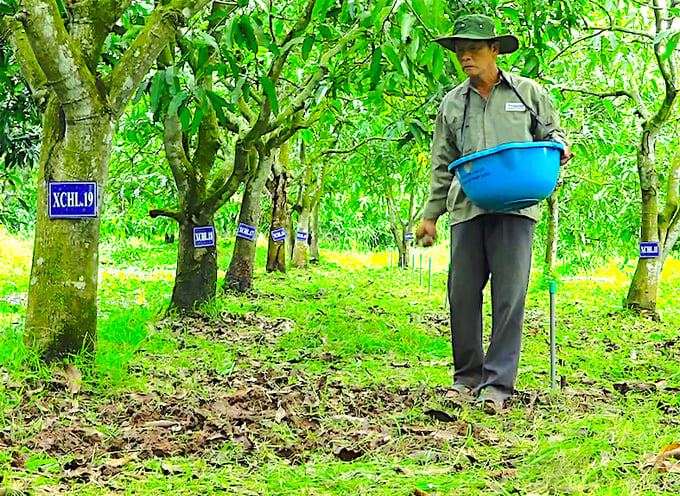
Taking care of the Hoa Loc mango garden recognized as the first of its kind. Photo: Minh Dam.
After more than 3 years of implementation, the project has established a process for identifying Hoa Loc mango seedlings through protein electrophoresis and asexual embryo propagation. The steps of caring for the original Hoa Loc mango trees ensure the correct production process. If the project is successful, it will help propagate about 13,000 original Hoa Loc mango trees to supply farmers for planting, serving export needs.
Mr. Nguyen Van Nha, Chairman of Cai Be District People's Committee said: "In order to contribute to affirming the brand and opening up new prospects for Hoa Loc mango products, the locality has successfully chaired the project "Certification of Hoa Loc mango parent gardens in Cai Be District, Tien Giang Province" in specialized propagation of Hoa Loc mango, meeting the requirements of exporting fresh fruit as well as serving local ecotourism.
In the coming time, the People's Committee of Cai Be district will direct the Department of Agriculture and Rural Development of the district to coordinate with localities to continue to encourage and support mango growers to focus on production according to GAP standards, apply science and technology in production, and at the same time connect with businesses to create value chains and ensure sustainable output for products, contributing to affirming the brand, opening up many new prospects for Hoa Loc mango products.
Source


![[Photo] Promoting friendship, solidarity and cooperation between the armies and people of the two countries](https://vstatic.vietnam.vn/vietnam/resource/IMAGE/2025/4/17/0c4d087864f14092aed77252590b6bae)
![[Photo] Nhan Dan Newspaper announces the project "Love Vietnam so much"](https://vstatic.vietnam.vn/vietnam/resource/IMAGE/2025/4/17/362f882012d3432783fc92fab1b3e980)
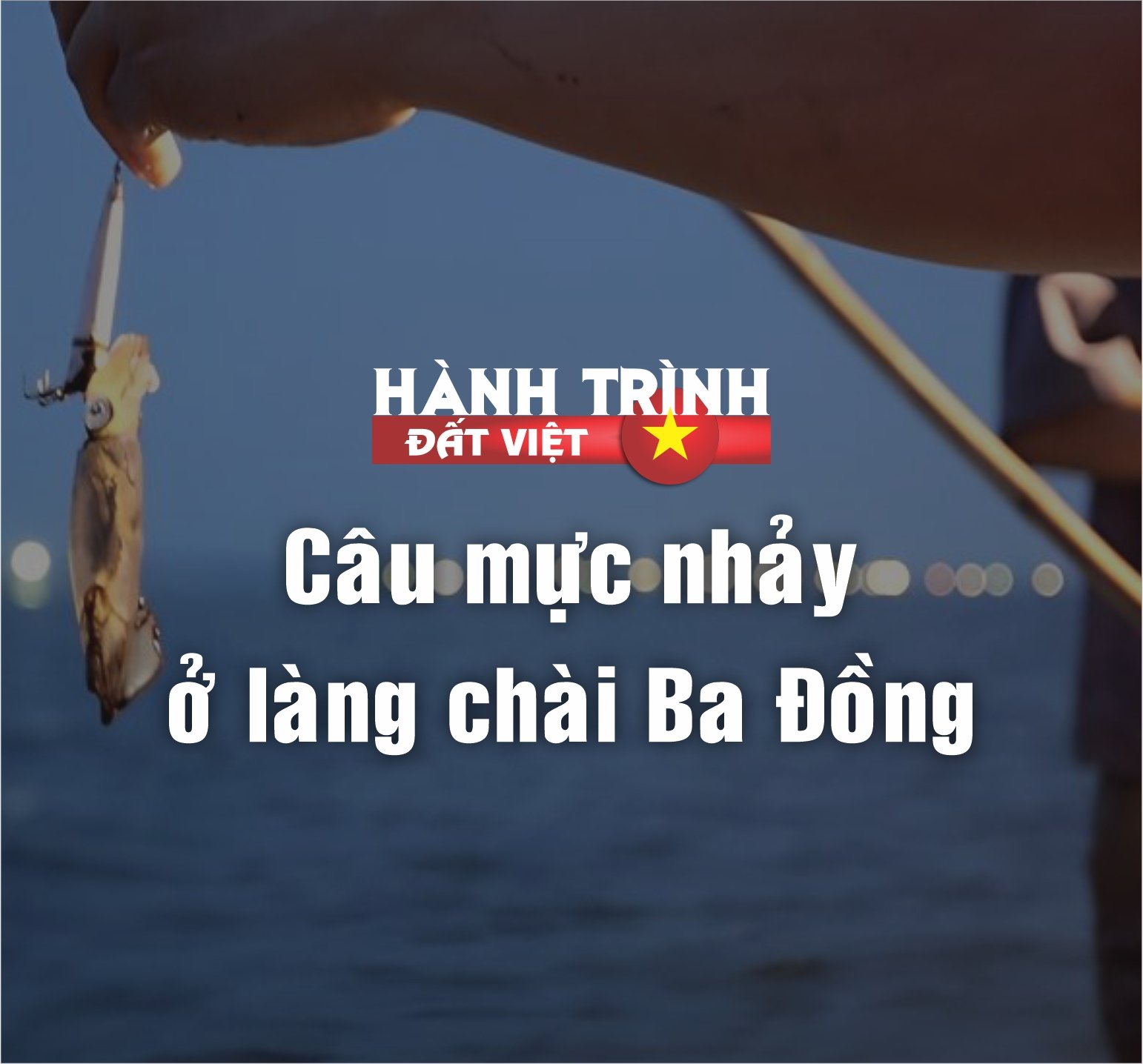
![[Photo] National Assembly Chairman Tran Thanh Man meets with outstanding workers in the oil and gas industry](https://vstatic.vietnam.vn/vietnam/resource/IMAGE/2025/4/17/1d0de4026b75434ab34279624db7ee4a)
![[Photo] General Secretary To Lam receives French Ambassador to Vietnam Olivier Brochet](https://vstatic.vietnam.vn/vietnam/resource/IMAGE/2025/4/17/49224f0f12e84b66a73b17eb251f7278)
![[Photo] Closing of the 4th Summit of the Partnership for Green Growth and the Global Goals](https://vstatic.vietnam.vn/vietnam/resource/IMAGE/2025/4/17/c0a0df9852c84e58be0a8b939189c85a)




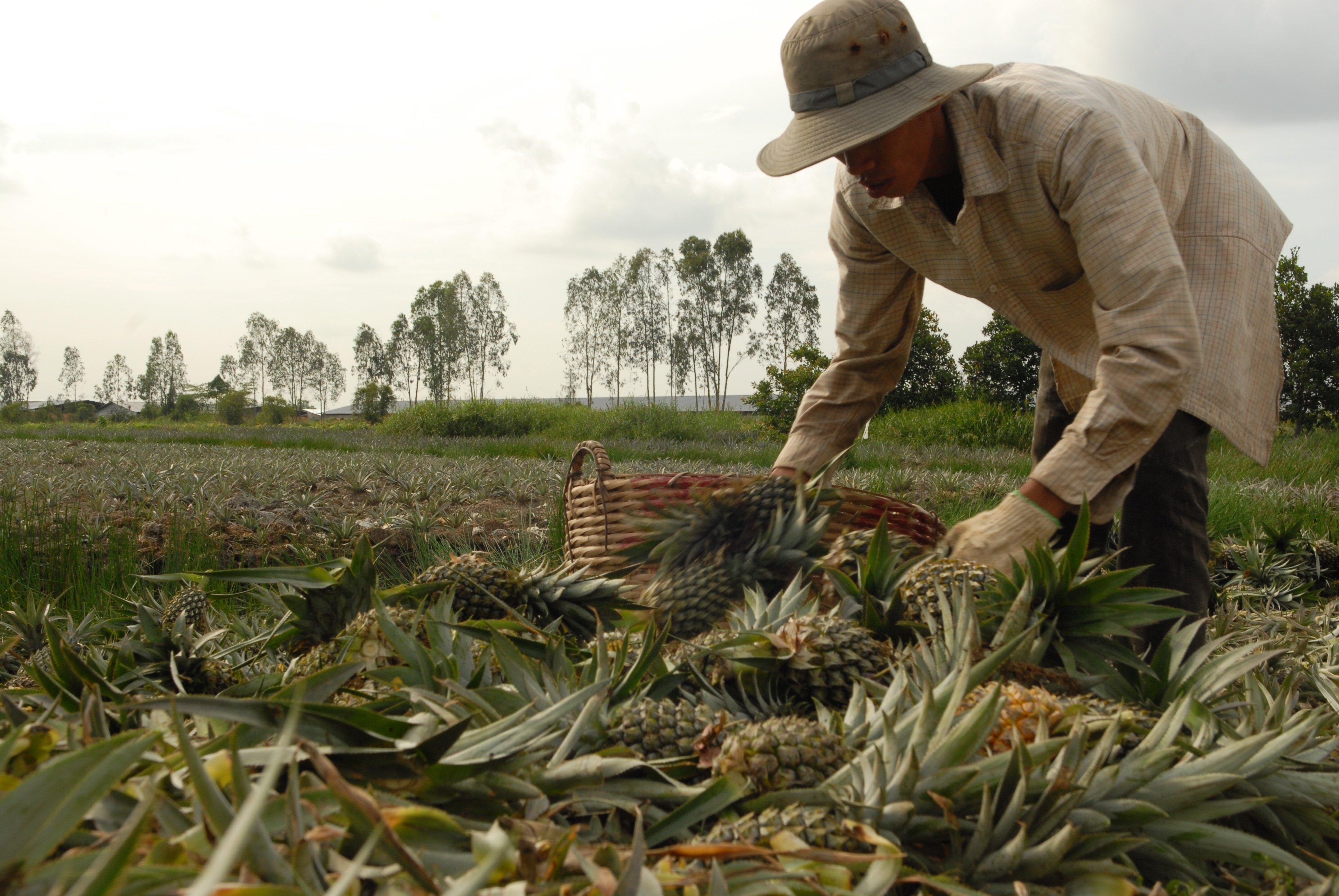
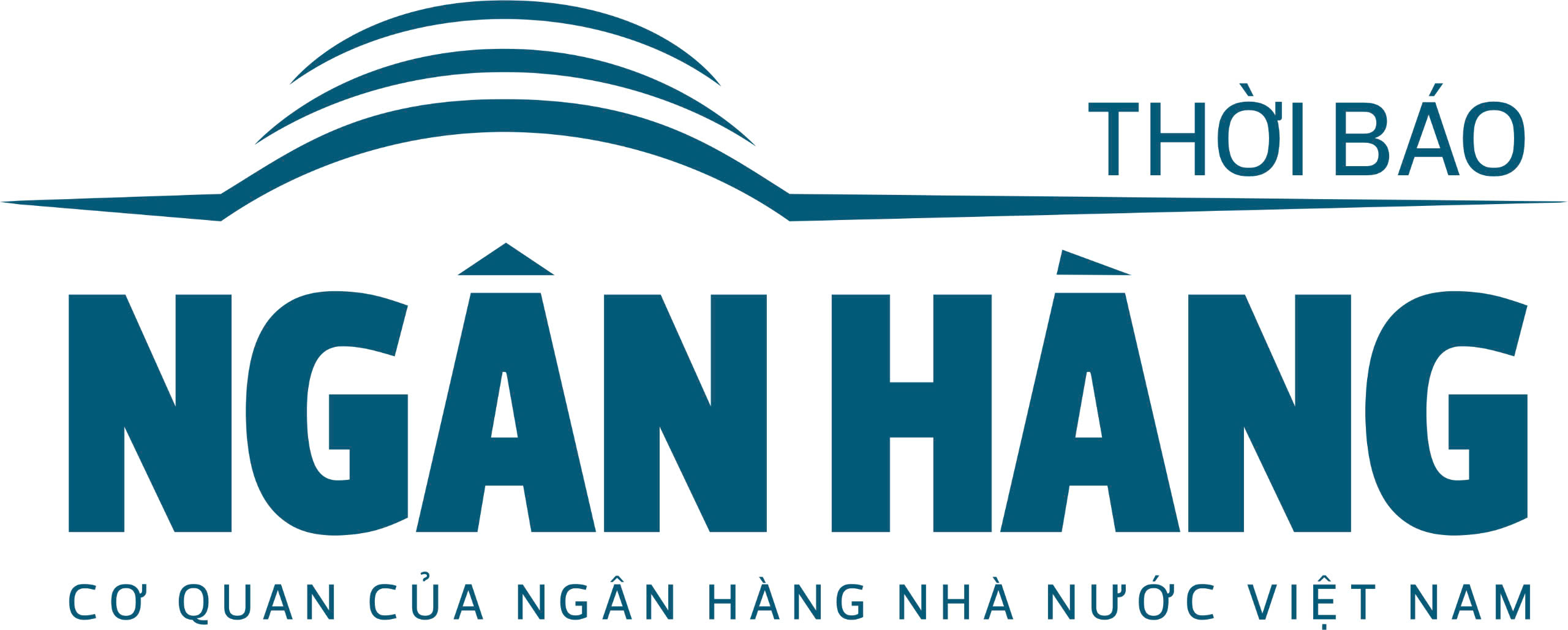
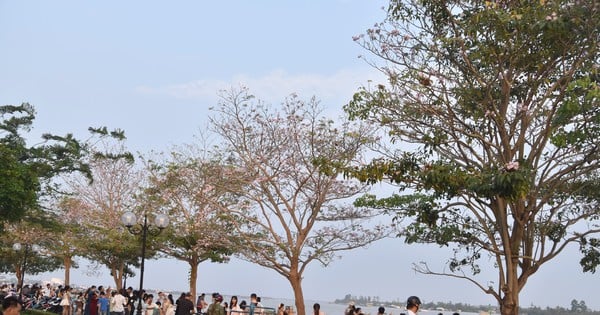
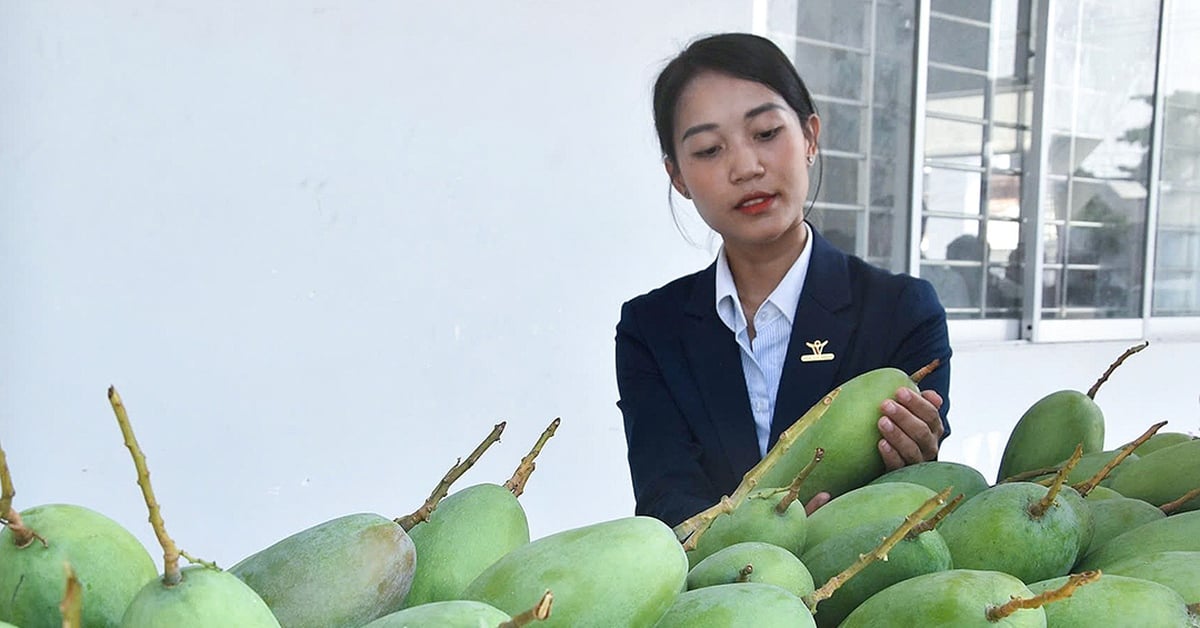




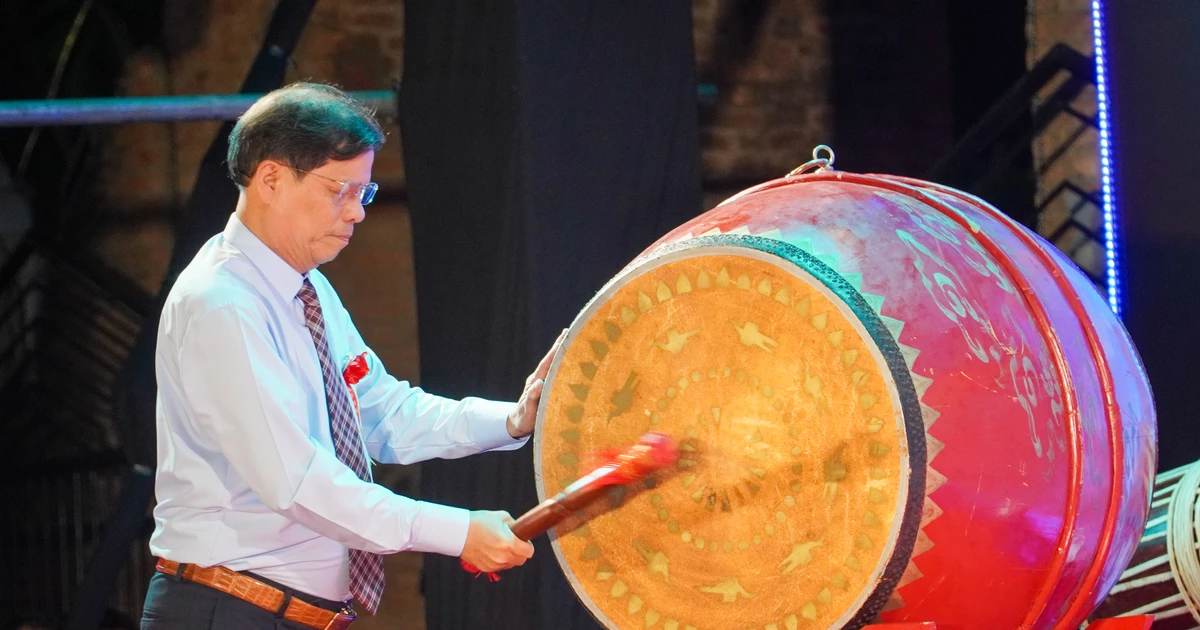






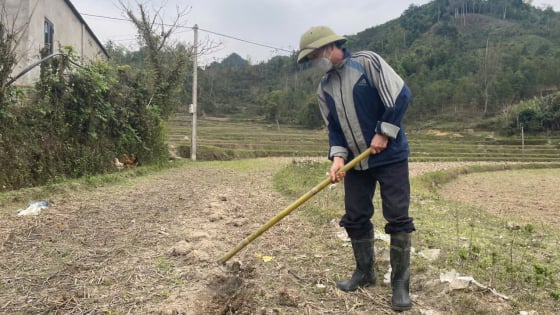
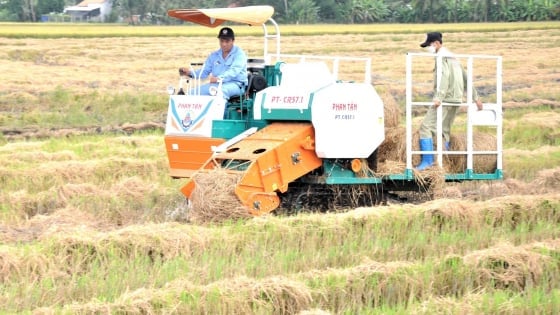

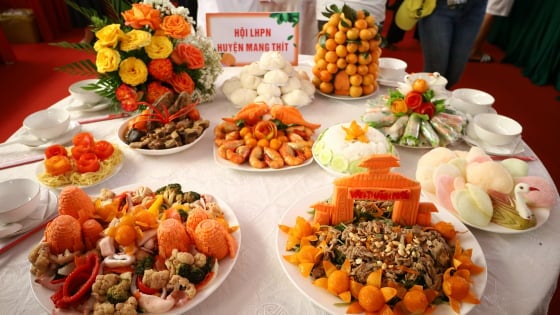
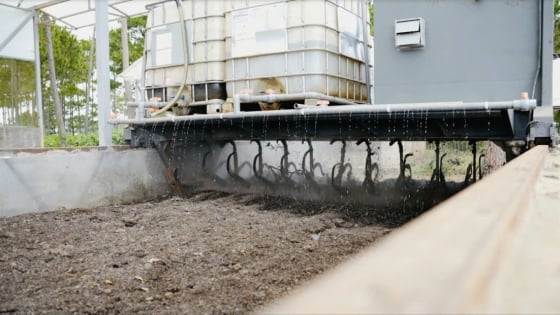
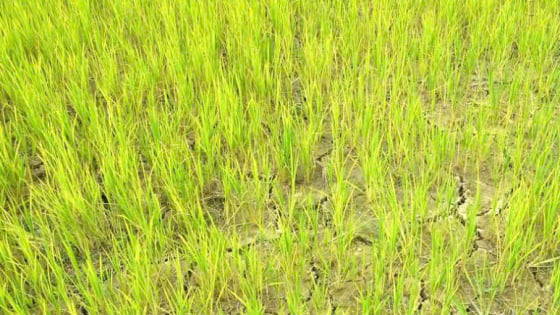
![[Photo] Welcoming ceremony for Chinese Defense Minister and delegation for friendship exchange](https://vstatic.vietnam.vn/vietnam/resource/IMAGE/2025/4/17/fadd533046594e5cacbb28de4c4d5655)










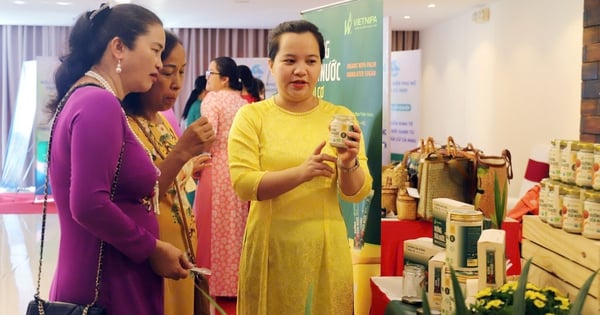








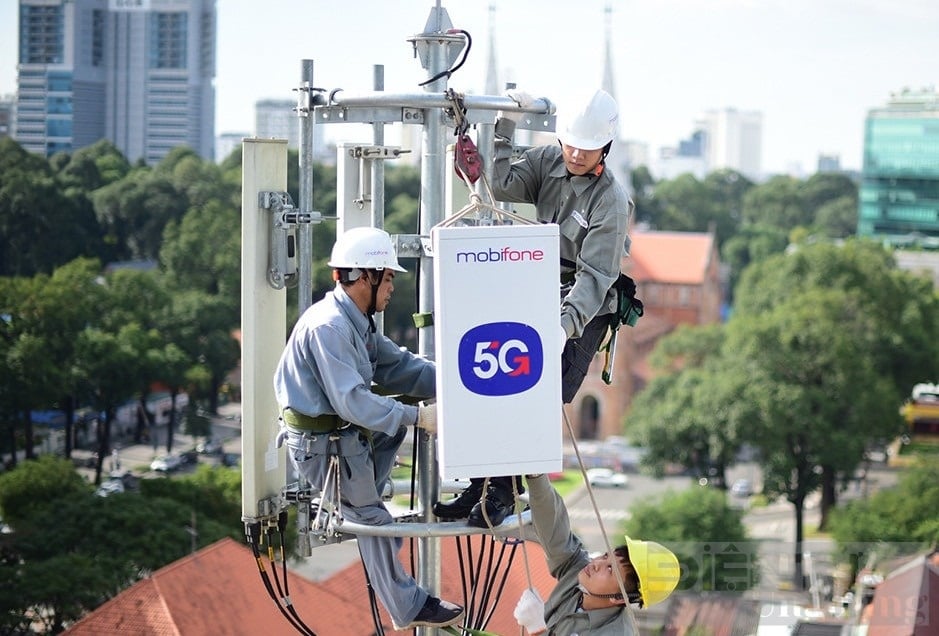





![[Video] Viettel officially puts into operation the largest submarine optical cable line in Vietnam](https://vstatic.vietnam.vn/vietnam/resource/IMAGE/2025/4/17/f19008c6010c4a538cc422cb791ca0a1)

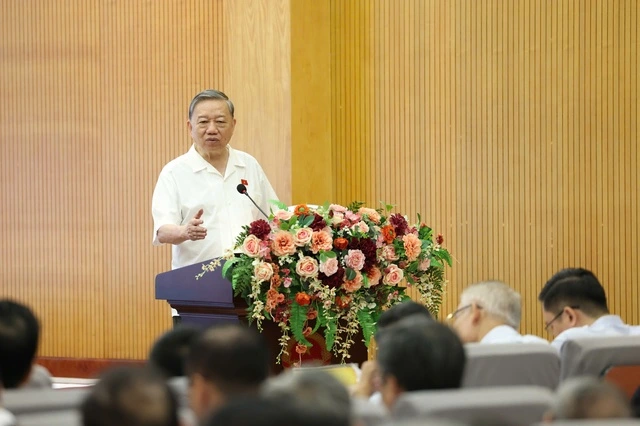







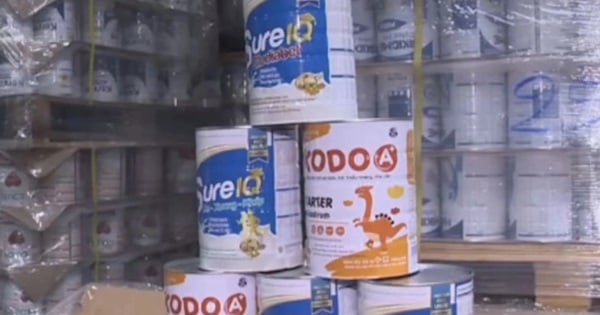




















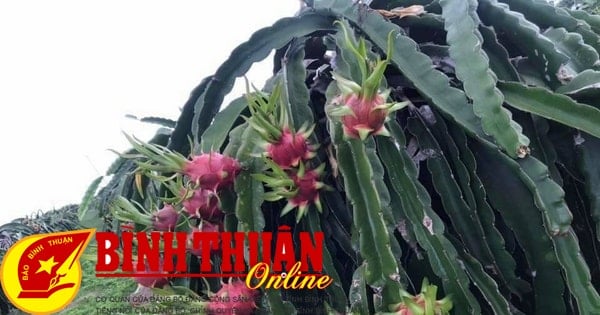

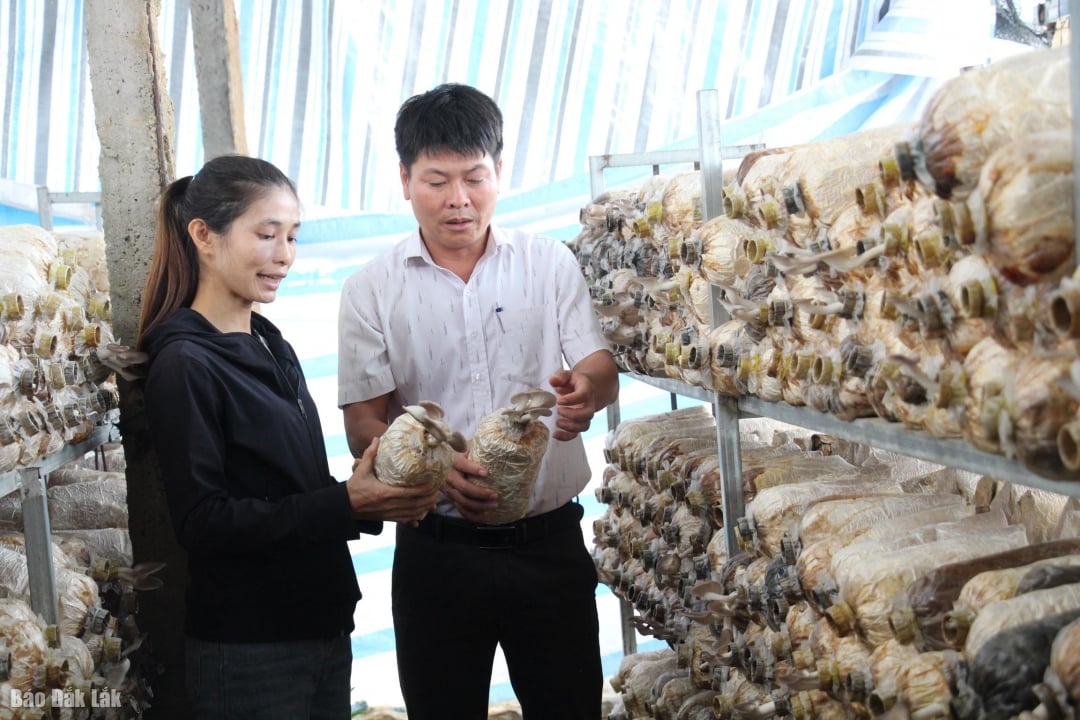





Comment (0)